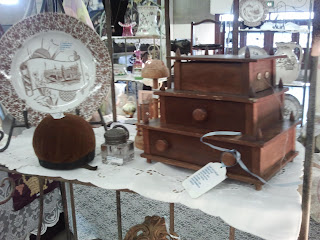 |
| Fabric in vintage pin wheel quilt - hand quilted |
The crocus that bloomed last week are covered in a fresh blanket of snow. The great thing about getting a big snow here is it doesn't stay around for long.
That's not stopping us from thinking about warm weather and flowers.
We have lots of rabbits in our yard so anything we plant is at risk of becoming their dinner.
This vintage applique crib sheet is hand stitched.
The curtain is dimensional.
The words of the entire nursery school poem:
(First published in 1784)
Bye, baby bunting,
Father's gone a-hunting,
Mother's gone a-milking,
Sister's gone a-silking,
Brother's gone to buy a skin
To wrap the baby bunting in.
Father's gone a-hunting,
Mother's gone a-milking,
Sister's gone a-silking,
Brother's gone to buy a skin
To wrap the baby bunting in.
Cry, baby bunting,
Daddy’s gone a-hunting,
Gone to get a rabbit skin
To wrap the baby bunting in
Daddy’s gone a-hunting,
Gone to get a rabbit skin
To wrap the baby bunting in
I first saw these sewing eggs on Merilyn's Quiltminstrel blog. HERE
I told here I had never seen the Singer Eggs in the US. I still haven't, but I have found a few sewing eggs.
 |
| I'm pretty sure the gold egg is good luck! |
Here are the eggs opened.
The gold egg holds a velvet pin cushion with a tape measure in the bottom. The thimble sits atop the cushion with a little clamp.
The red egg is a mending kit complete with thread, needle and thimble - no brand.
The egg might be a painted milk glass darning egg - more research needed on it.
Happy spring or fall depending where you live!
References:
Nursery-rhymes.org (Longer verses and history) HERE
More about baby bunting HERE
Crib quilt with the same name HERE













